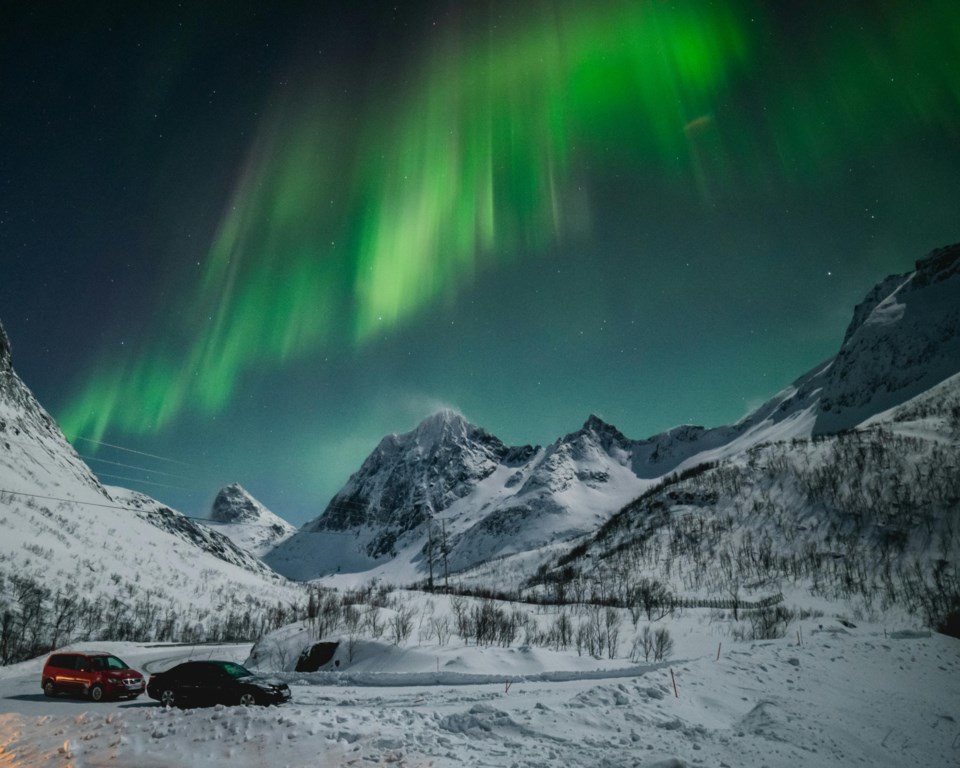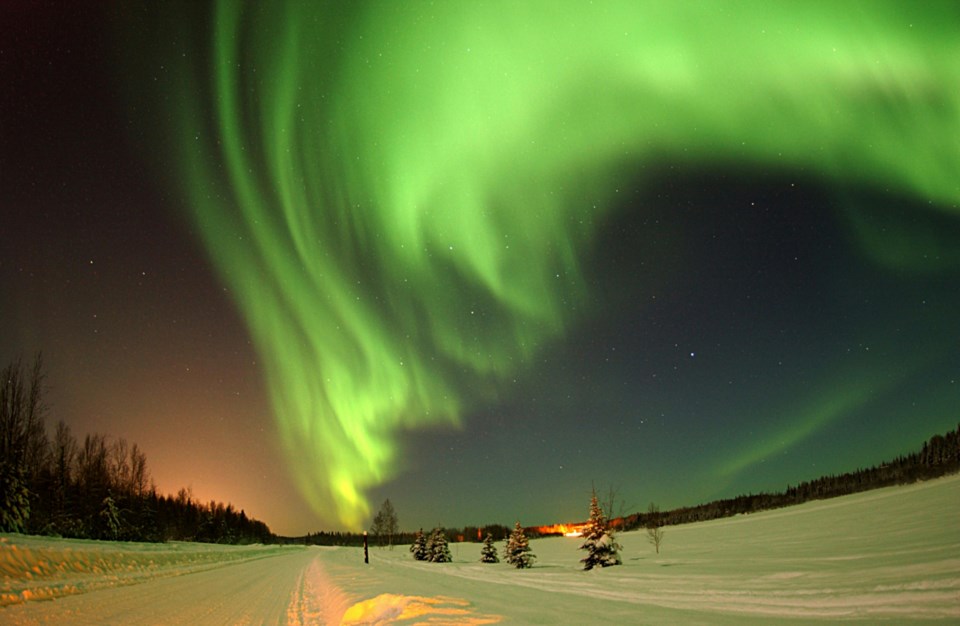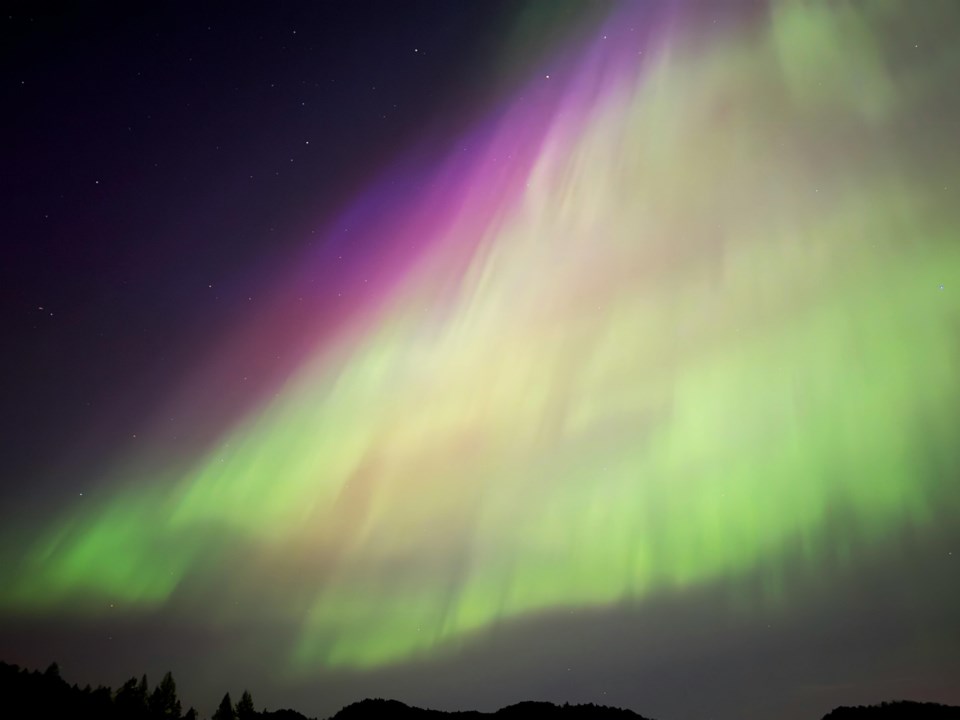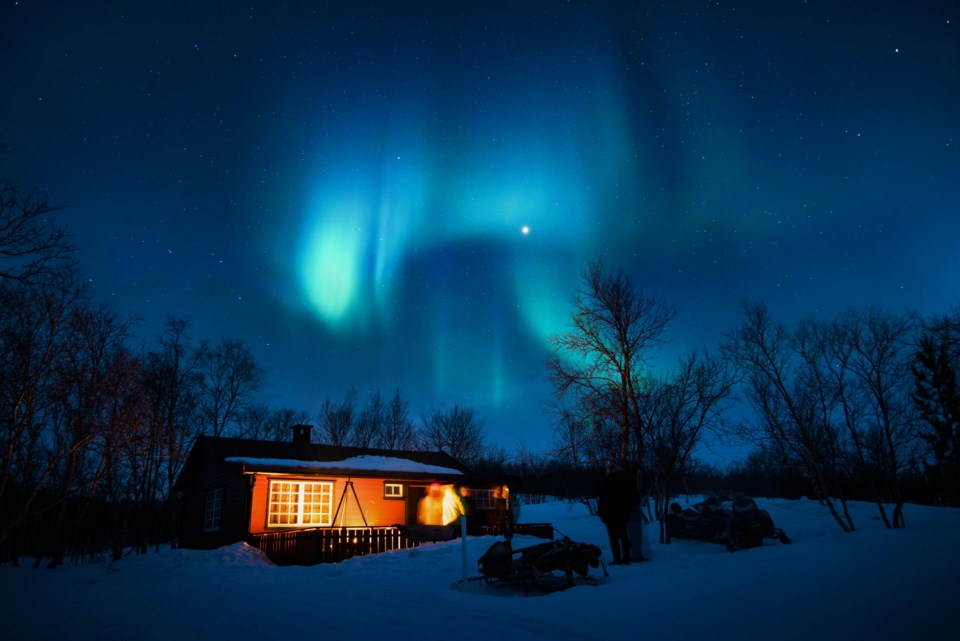
The northern lights, or aurora borealis, are a stunning natural light display that occasionally graces Colorado’s skies. Typically seen in Arctic regions, this rare phenomenon happens when solar particles interact with Earth’s atmosphere. Colorado’s high-altitude spots and dark skies make it a surprising but ideal place to catch the northern lights. Though rare, these moments captivate skywatchers and photographers alike. If you’re eager to witness the northern lights in Colorado, here’s how, when, and where to experience them.
What Causes the Northern Lights?
The northern lights are created when charged particles from the sun, known as solar wind, collide with gases in Earth’s atmosphere. This interaction releases energy in the form of vibrant colors, often green, pink, or purple, lighting up the night sky. These displays typically occur near Earth’s magnetic poles, where the magnetic field is strongest and guides the particles into the atmosphere.
Geomagnetic storms, caused by intensified solar activity, can push the aurora further south, making it visible in places like Colorado. The strength of these storms determines how far the lights can travel beyond the usual polar zones. Earth’s magnetic field plays a crucial role in shaping and directing the auroras, creating the beautiful patterns seen in the sky.
Why Are They Rare in Colorado?
Colorado’s location, much further south than typical aurora-viewing regions like Alaska or Scandinavia, makes sightings of the northern lights infrequent. Strong geomagnetic storms are needed to push the lights far enough south to be visible in the state. These conditions are rare, occurring only when solar activity is unusually intense.
Even when conditions are ideal, Colorado’s weather and light pollution can pose challenges. Cloud cover can obscure the sky, and urban light pollution from cities like Denver makes it harder to see faint auroras. Clear, dark skies away from city lights are essential for catching this extraordinary phenomenon.
Best Times to See the Aurora in Colorado

The best time to see the northern lights in Colorado is during periods of strong solar activity, often forecasted by scientists who monitor the sun's behavior. These heightened activities are typically associated with solar maximum phases, which occur roughly every 11 years. Staying updated with aurora alerts, space weather predictions, and KP index readings can significantly improve your chances of planning a successful viewing during these rare events.
Winter months are ideal for aurora spotting in Colorado, as the longer nights and often clearer skies provide better conditions for visibility. Peak viewing times are usually between 10 PM and 2 AM, with midnight being a particularly favorable window. The darker and later it is, the better your chances of catching the lights, especially if you’re in an area free from city lights, heavy cloud cover, and other visual obstructions.
Top Spots to Watch the Northern Lights in Colorado
Colorado’s diverse landscapes provide several excellent locations for aurora spotting, each offering unique advantages. The northeast corner of Colorado, near the borders of Wyoming and Nebraska, is particularly promising for its wide-open skies and relatively low light pollution. Areas like Fort Collins, Fort Morgan, and Greeley are ideal for those seeking accessible yet scenic locations.
Further northeast, Pawnee National Grassland offers vast, unobstructed horizons perfect for aurora viewing. For those who prefer mountain settings, Dark Sky Communities like Crestone, located on the western slope of the Sangre de Cristo Mountains, provide some of the best stargazing conditions in the state. Another standout location is Smokey Jack Observatory, perched at 8,000 feet in elevation, which combines high-altitude clarity with dark skies for a truly unforgettable experience.
How to Track Aurora Activity

Tracking aurora activity is essential if you want to catch the northern lights in Colorado, as the phenomenon is rare and unpredictable. One of the most reliable ways to stay informed is by using dedicated apps like Aurora Forecast and My Aurora Forecast, which provide real-time updates on aurora visibility, solar activity, and weather conditions. These tools are user-friendly and can notify you when conditions are favorable for viewing. Another invaluable resource is NOAA’s Space Weather Prediction Center, which offers detailed information about geomagnetic storms, solar wind, and auroral forecasts.
Social media can also be a surprisingly effective tool for staying informed. Many local photographers and skywatching groups post alerts and updates when the northern lights are visible or likely to appear. Joining such communities can provide real-time reports and tips from those actively monitoring the skies. By using these tools and staying connected, you can significantly increase your chances of experiencing the northern lights in Colorado.
Tools for Monitoring Geomagnetic Activity
Understanding geomagnetic activity can help you better predict the likelihood of seeing the northern lights. The KP index scale is a widely used tool that measures geomagnetic activity on a scale from 0 to 9. A KP index of 5 or higher is typically required to see the northern lights in Colorado. Tracking this scale will give you a clear idea of when conditions are favorable.
In addition to the KP index, real-time aurora maps available online provide visual representations of auroral activity and its expected reach. These maps use solar wind data and magnetic field information to show aurora visibility zones. Learning to interpret these data sets can give you a deeper understanding of auroral patterns, enhancing your ability to plan for the best viewing opportunities.
Photography Tips for Capturing the Northern Lights

Photographing the northern lights in Colorado requires preparation and the right equipment to do justice to this spectacular phenomenon. A DSLR or mirrorless camera with manual settings is ideal, as it allows you to fine-tune exposure, focus, and other essential settings. Using a sturdy tripod is crucial to keep your camera stable during long exposures, which are necessary to capture the faint and dynamic colors of the aurora. Without a tripod, even the slightest movement can blur your photos and diminish their quality.
For the best results, adjust your camera to settings optimized for low light. A wide aperture (f/2.8 or lower) will let in more light, while a low ISO (800-1600) helps reduce noise. A long exposure time, typically between 5 to 20 seconds, allows the camera to capture more detail and vibrant colors. Practice in advance to familiarize yourself with your camera’s settings, and don’t forget to bring spare batteries, as cold weather can drain them quickly.
Myths and Misconceptions About the Aurora
One common myth about the northern lights is that they can be predicted with complete accuracy. While tools like aurora forecast apps and geomagnetic indices help identify favorable conditions, the aurora is still a natural phenomenon influenced by many variables. Even with high KP index levels, factors like cloud cover and atmospheric interference can affect visibility, making the northern lights in Colorado somewhat elusive.
Another misconception is that the northern lights are always green. While green is the most common color, auroras can also appear in shades of pink, red, purple, and even yellow, depending on the type of gases in the atmosphere and the altitude of the aurora. Historically, auroras have been surrounded by myths and legends. Some ancient cultures believed they were spirits dancing in the sky, while others thought they were omens of significant events. These misconceptions add to the mystique and wonder of the aurora but highlight the importance of understanding the science behind this natural marvel.
FAQs About the Northern Lights in Colorado
Can you really see the northern lights in Colorado?
Yes, it is possible to see the northern lights in Colorado, but it’s rare. While the aurora is typically visible in more northern regions like Alaska, strong solar storms can push the lights further south. Colorado's high altitude and low light pollution in certain areas make it an ideal spot for rare sightings.
What KP index is needed to see the aurora in Colorado?
To see the northern lights in Colorado, a KP index of 5 or higher is usually needed. The KP index measures geomagnetic activity, with higher values indicating stronger aurora displays. A KP index of 5 or greater increases the chances of seeing the aurora in Colorado, although other factors like cloud cover and local weather conditions play a role.
Which season is best for northern lights in Colorado?
The best season for viewing the northern lights in Colorado is winter. During winter, the nights are longer, providing more opportunities for aurora sightings. Clear, crisp skies are also more common in the colder months, which is essential for visibility.
Are northern lights guaranteed during a solar storm?
Northern lights are not guaranteed even during a solar storm. While solar storms increase the chances of aurora displays, factors like cloud cover, light pollution, and geographical location can still prevent visibility. Strong storms make it more likely, but there’s no certainty that the aurora will be visible from every location.
What equipment do I need to view the aurora?
To view the northern lights, you don’t need specialized equipment; the naked eye can usually spot them when conditions are right. However, a camera with manual settings, tripod, and wide-angle lens are recommended for capturing high-quality photos. Binoculars or a telescope can also enhance your viewing experience, allowing you to see more details of the aurora.
How can I find dark sky locations in Colorado?
Colorado has several designated Dark Sky Communities, including areas like Crestone and the Great Sand Dunes National Park, which offer excellent conditions for stargazing and aurora viewing. You can also look for places far from city lights, such as Rocky Mountain National Park or Pawnee National Grassland, where light pollution is minimal. Online maps and apps that highlight dark sky locations can also help you find the best spots.
Are northern lights visible to the naked eye or just cameras?
The northern lights are typically visible to the naked eye, especially when the aurora is strong. In most cases, you will see a faint glow or shimmering lights in the sky, particularly if you're in an area with little light pollution. However, cameras with manual settings can capture more vibrant details that may be harder to see with the naked eye.
How long do northern lights displays typically last?
Northern lights displays can vary in length, from just a few minutes to several hours. Most auroras last between 20 minutes to an hour, though longer shows are possible during intense solar storms. The display's intensity can fluctuate throughout the night, with some bursts of activity lasting only a few minutes, followed by quieter periods.
Conclusion
The northern lights in Colorado are a rare and mesmerizing phenomenon that draws skywatchers from all over. Though sightings are not guaranteed, the allure of witnessing this natural wonder makes the pursuit worthwhile. By staying informed about aurora activity, choosing the right locations, and being patient, you can increase your chances of experiencing the breathtaking beauty of the northern lights in Colorado. Don’t forget to share your own experiences or photos with fellow aurora enthusiasts—who knows when the next spectacular display might appear!


